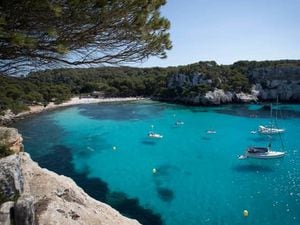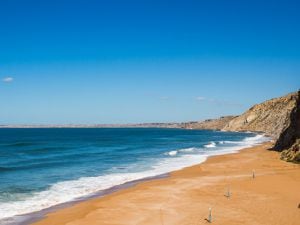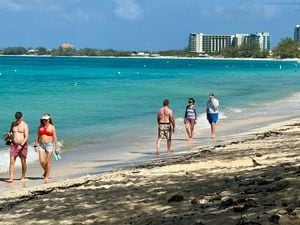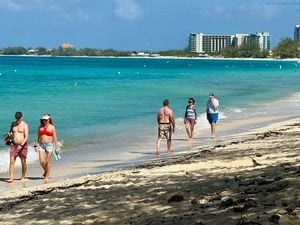Country offers so much more than just sun, sea and sand
Think of Christmas, and unless it’s the actual festive bird, you probably would not associate it with Turkey.
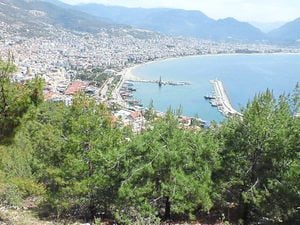
Turkey, now renamed Turkiye, is a vast nation that spans two continents.
It offers plenty for tourists, but the legend of Santa Claus may be something of a surprise.
Experts in the country say they have uncovered the tomb of St Nicholas, who is believed to be the inspiration for Santa.
A Christian bishop of Greek origin who was known for giving to the poor, he lived between the years 270 and 343 and the legends are believed to have inspired the Christmas tales we tell today that Santa Claus will bring presents if you’ve been good. St Nicholas’ tomb was found in St Nicholas Church in Demre, in the Antalya district of southern Turkey.
Antalya is also one of the most popular tourist destinations in Turkey, known as the Turkish Riviera. One of its top resorts is Alanya, where there are miles of sandy blue flag beaches on both sides of the town. They offer a range of watersports, including jet skiing and windsurfing with plenty of bars and cafes nearby.

We stayed in a small hotel near a less crowded beach, where you can peacefully enjoy a seascape with the Taurus mountains as its backdrop.
But it’s much more than sun, sea and sand. For those who want to split their time between sunbathing and absorbing the region’s culture and history, there are fewer finer places.
That is where the Turkish tourism board helped us with a couple of guided tours, led by travel professional Volkan Asli, a man with an encyclopaedic knowledge of the region.
Before becoming modern-day Turkey, a state founded by Mustafa Kemal Atatürk in 1923, the Antolyan region was colonised and conquered by many races, from the early Hittites, through to the Greeks, the Romans, Seljuks, Byzantines and the Ottoman Empire.
Their legacies are written large across the Turkish landscape. Alanya Castle, which dates back to the 13th century was built on the ruins of a former Hellenistic fortress by Seljuk Turk leader Sultan Alaaddin Keykubat with the aim of keeping marauding pirates at bay.
Sitting high above the town on a rocky outcrop, its surrounding defensive walls are six kilometres long and outside are ruins of mosques, a caravanserai and a covered bazaar.
Within the walls can be found a ruined cistern and a Byzantine church and the usual medieval artefacts you would expect to see together with modern bazaars and cafes.
Getting up and down can be challenging so it is worth taking the cable car which will take you more than halfway to the top and offers stunning views on the way back down to the city.
Before the cable car, stop off at the Gardenia restaurant and enjoy the panoramic view across the miles-long Cleopatra Beach while enjoying a meal or just a drink.
Named after the ancient Egyptian queen, legend has it that Cleopatra fell in love with this beach after swimming in its azure waters and sunbathing on its golden sands.

Nearby is the equally spectacular Damlataş Cave, a 15,000 year-old ancient wonder underneath the castle that was discovered during the construction of a ferry pier in 1948. It has a startling array of stalactites and stalagmites, some as big as 15 metres, and lit up with a kaleidoscope of colours.
The air composition with a significant increase in carbon dioxide is said to have healing properties, and particularly helpful for those with breathing problems.
The city of Alanya itself is a vibrant, bustling mini-metropolis of chic stores, bars and bazaars. Try the Güverte and Kaleichi Meyhanesi restaurants that overlook the harbour, where pleasure cruisers disguised as ancient galleons are moored alongside the yachts of the super rich.
Perhaps one of the best ways to see the surrounding areas are the various jeep tours, which can range from half a day to a full day and cover most other touristic sites as well as excursions up into the Taurus mountains which overlook the city.
Our trip with local firm Timtur Alanya took us into the mountains to the Dimchay river with its huge imposing dam, which provides water for the irrigation of the area and a hydroelectric power plant. A brilliant way to see inland Turkey, but be prepared with sensible clothing though.
The ancient city of Side is worth the couple of hours drive from Alanya. Founded by Greek settlers around the seventh century BC, it lived for centuries under Greek and then Roman rule.
It features an ancient Greek amphitheatre with the centrepiece the Temple of Apollo and Athena. With its five imposing columns, it’s a monument to a glorious and chequered past.
As well as the walk through ancient history, the site had a bustling array of designer outlets as the road swoops down to a central square at the ancient harbour, dominated by a statue of Ataturk.
A four-hour flight from Birmingham, for those worried about security issues, don’t be, as airport measures are strict with visitors having to go through an initial security check before even getting into the airport proper. Then they go through the usual check-in process.
Like many countries, its tourism has been badly hit by the coronavirus pandemic, and then Turkey suffered the devastating blow of the giant earthquakes in the east of the country, leaving tens of thousands dead. But it is a country with so much to offer and an influx of tourists will have a major beneficial effect on its economy after such disasters.
Factfile
Bill travelled to Antalya Airport with Sunexpress from Birmingham and stayed at the Antique Roman Palace Hotel in Alanya.
For more information on Turkey, its resorts, cities, culture and world heritages sites, visit www,goturkiye.com or www.gototurkey.co.uk/
For information on the Alanya region, visit www.visitalanya.com/
For guided tours of the area contact: travelvolkan@hotmail.com

